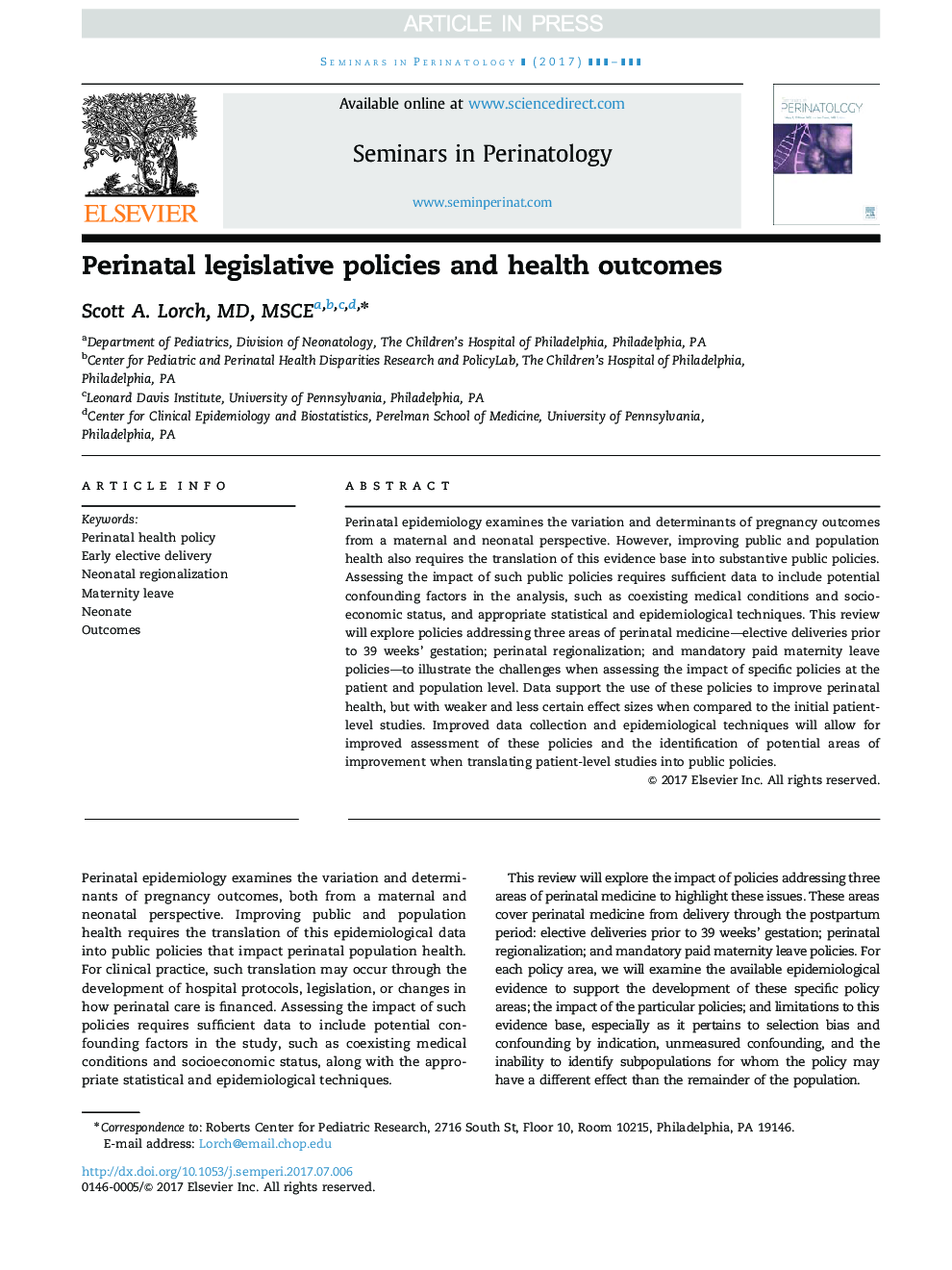| Article ID | Journal | Published Year | Pages | File Type |
|---|---|---|---|---|
| 5684533 | Seminars in Perinatology | 2017 | 10 Pages |
Abstract
Perinatal epidemiology examines the variation and determinants of pregnancy outcomes from a maternal and neonatal perspective. However, improving public and population health also requires the translation of this evidence base into substantive public policies. Assessing the impact of such public policies requires sufficient data to include potential confounding factors in the analysis, such as coexisting medical conditions and socioeconomic status, and appropriate statistical and epidemiological techniques. This review will explore policies addressing three areas of perinatal medicine-elective deliveries prior to 39 weeks' gestation; perinatal regionalization; and mandatory paid maternity leave policies-to illustrate the challenges when assessing the impact of specific policies at the patient and population level. Data support the use of these policies to improve perinatal health, but with weaker and less certain effect sizes when compared to the initial patient-level studies. Improved data collection and epidemiological techniques will allow for improved assessment of these policies and the identification of potential areas of improvement when translating patient-level studies into public policies.
Keywords
Related Topics
Health Sciences
Medicine and Dentistry
Medicine and Dentistry (General)
Authors
Scott A. MD, MSCE,
